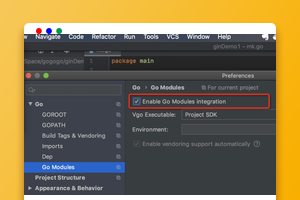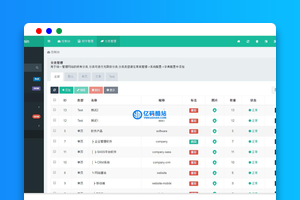序
本文主要研究一下golang的zap的SugaredLogger
SugaredLogger
zap@v1.16.0/sugar.go
type SugaredLogger struct {
base *Logger
}
func (s *SugaredLogger) Named(name string) *SugaredLogger {
return &SugaredLogger{base: s.base.Named(name)}
}
func (s *SugaredLogger) With(args ...interface{}) *SugaredLogger {
return &SugaredLogger{base: s.base.With(s.sweetenFields(args)...)}
}
func (s *SugaredLogger) Debug(args ...interface{}) {
s.log(DebugLevel, "", args, nil)
}
func (s *SugaredLogger) Info(args ...interface{}) {
s.log(InfoLevel, "", args, nil)
}
func (s *SugaredLogger) Warn(args ...interface{}) {
s.log(WarnLevel, "", args, nil)
}
func (s *SugaredLogger) Error(args ...interface{}) {
s.log(ErrorLevel, "", args, nil)
}
func (s *SugaredLogger) DPanic(args ...interface{}) {
s.log(DPanicLevel, "", args, nil)
}
func (s *SugaredLogger) Panic(args ...interface{}) {
s.log(PanicLevel, "", args, nil)
}
func (s *SugaredLogger) Fatal(args ...interface{}) {
s.log(FatalLevel, "", args, nil)
}
func (s *SugaredLogger) Debugf(template string, args ...interface{}) {
s.log(DebugLevel, template, args, nil)
}
func (s *SugaredLogger) Infof(template string, args ...interface{}) {
s.log(InfoLevel, template, args, nil)
}
func (s *SugaredLogger) Warnf(template string, args ...interface{}) {
s.log(WarnLevel, template, args, nil)
}
func (s *SugaredLogger) Errorf(template string, args ...interface{}) {
s.log(ErrorLevel, template, args, nil)
}
func (s *SugaredLogger) DPanicf(template string, args ...interface{}) {
s.log(DPanicLevel, template, args, nil)
}
func (s *SugaredLogger) Panicf(template string, args ...interface{}) {
s.log(PanicLevel, template, args, nil)
}
func (s *SugaredLogger) Fatalf(template string, args ...interface{}) {
s.log(FatalLevel, template, args, nil)
}
func (s *SugaredLogger) Debugw(msg string, keysAndValues ...interface{}) {
s.log(DebugLevel, msg, nil, keysAndValues)
}
func (s *SugaredLogger) Infow(msg string, keysAndValues ...interface{}) {
s.log(InfoLevel, msg, nil, keysAndValues)
}
func (s *SugaredLogger) Warnw(msg string, keysAndValues ...interface{}) {
s.log(WarnLevel, msg, nil, keysAndValues)
}
func (s *SugaredLogger) Errorw(msg string, keysAndValues ...interface{}) {
s.log(ErrorLevel, msg, nil, keysAndValues)
}
func (s *SugaredLogger) DPanicw(msg string, keysAndValues ...interface{}) {
s.log(DPanicLevel, msg, nil, keysAndValues)
}
func (s *SugaredLogger) Panicw(msg string, keysAndValues ...interface{}) {
s.log(PanicLevel, msg, nil, keysAndValues)
}
func (s *SugaredLogger) Fatalw(msg string, keysAndValues ...interface{}) {
s.log(FatalLevel, msg, nil, keysAndValues)
}
func (s *SugaredLogger) Sync() error {
return s.base.Sync()
}
SugaredLogger提供了debug、info、warn、error、panic、dpanic、fatal这几种方法(
使用fmt.Sprint的默认格式),另外还有带f的支持format,带w的方法则支持with键值对
level
zap@v1.16.0/level.go
const (
// DebugLevel logs are typically voluminous, and are usually disabled in
// production.
DebugLevel = zapcore.DebugLevel
// InfoLevel is the default logging priority.
InfoLevel = zapcore.InfoLevel
// WarnLevel logs are more important than Info, but don't need inpidual
// human review.
WarnLevel = zapcore.WarnLevel
// ErrorLevel logs are high-priority. If an application is running smoothly,
// it shouldn't generate any error-level logs.
ErrorLevel = zapcore.ErrorLevel
// DPanicLevel logs are particularly important errors. In development the
// logger panics after writing the message.
DPanicLevel = zapcore.DPanicLevel
// PanicLevel logs a message, then panics.
PanicLevel = zapcore.PanicLevel
// FatalLevel logs a message, then calls os.Exit(1).
FatalLevel = zapcore.FatalLevel
)
zap内部的level分为debug、info、warn、error、dpanic、panic、fatal这几种
DPanic
DPanic stands for “panic in development.” In development, it logs at PanicLevel; otherwise, it logs at ErrorLevel. DPanic makes it easier to catch errors that are theoretically possible, but shouldn’t actually happen, without crashing in production.
DPanic in development
func dpanicInDevelopment() {
logger, _ := zap.NewDevelopment()
defer logger.Sync() // flushes buffer, if any
sugar := logger.Sugar()
sugar.DPanic("test dpanic")
sugar.Info("this will not be logged")
}
DPanic在development下的效果跟panic效果类似,最后的info不会被输出
DPanic in production
func dpanicInProduction() {
logger, _ := zap.NewProduction()
defer logger.Sync() // flushes buffer, if any
sugar := logger.Sugar()
sugar.DPanic("test dpanic logged as error in not development mode")
sugar.Info("this will be logged")
}
DPanic在非development下则退化为error模式,最后的info照样会输出,这样子在production下比较安全一点。
logger.check
zap@v1.16.0/logger.go
func (log *Logger) check(lvl zapcore.Level, msg string) *zapcore.CheckedEntry {
// check must always be called directly by a method in the Logger interface
// (e.g., Check, Info, Fatal).
const callerSkipOffset = 2
// Check the level first to reduce the cost of disabled log calls.
// Since Panic and higher may exit, we skip the optimization for those levels.
if lvl < zapcore.DPanicLevel && !log.core.Enabled(lvl) {
return nil
}
// Create basic checked entry thru the core; this will be non-nil if the
// log message will actually be written somewhere.
ent := zapcore.Entry{
LoggerName: log.name,
Time: time.Now(),
Level: lvl,
Message: msg,
}
ce := log.core.Check(ent, nil)
willWrite := ce != nil
// Set up any required terminal behavior.
switch ent.Level {
case zapcore.PanicLevel:
ce = ce.Should(ent, zapcore.WriteThenPanic)
case zapcore.FatalLevel:
onFatal := log.onFatal
// Noop is the default value for CheckWriteAction, and it leads to
// continued execution after a Fatal which is unexpected.
if onFatal == zapcore.WriteThenNoop {
onFatal = zapcore.WriteThenFatal
}
ce = ce.Should(ent, onFatal)
case zapcore.DPanicLevel:
if log.development {
ce = ce.Should(ent, zapcore.WriteThenPanic)
}
}
// Only do further annotation if we're going to write this message; checked
// entries that exist only for terminal behavior don't benefit from
// annotation.
if !willWrite {
return ce
}
// Thread the error output through to the CheckedEntry.
ce.ErrorOutput = log.errorOutput
if log.addCaller {
frame, defined := getCallerFrame(log.callerSkip + callerSkipOffset)
if !defined {
fmt.Fprintf(log.errorOutput, "%v Logger.check error: failed to get caller\n", time.Now().UTC())
log.errorOutput.Sync()
}
ce.Entry.Caller = zapcore.EntryCaller{
Defined: defined,
PC: frame.PC,
File: frame.File,
Line: frame.Line,
Function: frame.Function,
}
}
if log.addStack.Enabled(ce.Entry.Level) {
ce.Entry.Stack = StackSkip("", log.callerSkip+callerSkipOffset).String
}
return ce
}
小结
- zap内部的level分为debug、info、warn、error、dpanic、panic、fatal这几种
- SugaredLogger提供了debug、info、warn、error、panic、dpanic、fatal这几种方法(
使用fmt.Sprint的默认格式),另外还有带f的支持format,带w的方法则支持with键值对 - DPanic在development下的效果跟panic效果类似,在非development下则退化为error模式
以上就是带你研究一下go zap的SugaredLogger!的详细内容,更多请关注亿码酷站其它相关文章!
<!–
—–文章转载自PHP中文网如有侵权请联系ymkuzhan@126.com删除
本文永久链接地址:https://www.ymkuzhan.com/41986.html

 成为VIP
成为VIP








